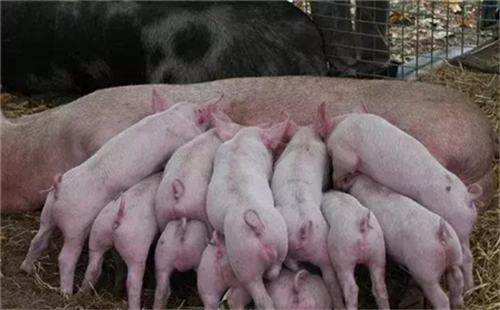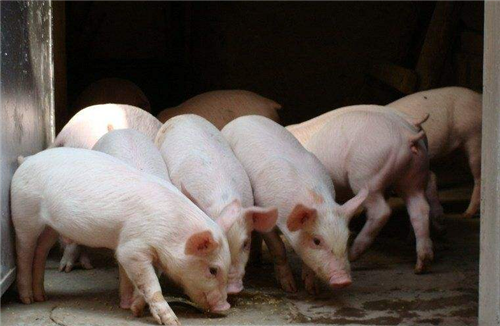Why is it difficult to prevent and control viral diarrhea in piglets?
Piglet diarrhea is a symptom of pig disease in pig production. There are many causes of diarrhea, such as viral, bacterial, parasitic and nutritional factors, among which porcine epidemic diarrhea virus is the main cause of watery diarrhea in piglets in delivery room in recent years. Porcine epidemic diarrhea virus (PEDV) can cause infection in pigs of all ages. The incidence of piglets in delivery rooms, especially suckling piglets under 7 days old, can reach 100%, and the death rate is more than 80%. Some pig farms even occur repeatedly, and sick pig farms often suffer heavy losses. Why is it difficult to prevent and control viral diarrhea?
1. PEDV mutation
PEDV is the main pathogen of viral diarrhea in piglets. Obvious variation occurred after 2010, resulting in the enhancement of virulence of the strain. Pigs of all ages can suffer from the disease all the year round. Vaccine strain CV777, vaccine strain ZJ08 and Korean vaccine strain DR13 all belong to G1 group and belong to conventional classical strains. The epidemic strain belongs to G2 group, and the variation of the strain significantly reduces the vaccine protection efficacy of the classical strain.

2. PED has many ways of transmission and is highly contagious.
PED can be transmitted horizontally and vertically, and sow milk can also be toxic. PEDV survived for a long time in the environment. At room temperature, PEDV could survive for 7 days in dry feed, 28 days in wet feed, 14 days in fecal slurry, and 7-13 days in drinking water or circulating water.
The amount of virus excreted by infected pigs was large, and there were 10 billion virions in 1 g feces at the peak of the disease, while half of the infection dose of PEDV was very low. The detoxification time of infected pigs was long, and some experiments showed that viral nucleic acid could be detected in oral fluid 10 weeks after infection.
3. The pathogen is complex, and most of them are mixed infection.
The pathogens causing viral diarrhea include porcine epidemic diarrhea (PEDV), porcine transmissible gastroenteritis (TGEV), porcine Delta coronavirus (PDCoV), porcine rotavirus (PoRV), porcine pseudorabies (PRV), porcine circovirus type 2 (PCV2), swine fever CSFV and swine blue ear disease virus (PRRSV). In addition, porcine Kub virus (PKoV) and porcine Boca virus (PBoV) have been reported. Porcine Sapeiro virus (PSV) can cause vomiting and diarrhea in pigs to some extent. Diarrhea is mostly mixed infection, which increases the difficulty of prevention and control.
Table 2, Table 3, Zhou Ling, Chen Guihua et al., investigation and analysis of pathogens of diarrhea in large-scale pig farms in Guangdong from 2016 to 2017 [J], Chinese Journal of Veterinary Medicine, 2017 (10): 3-5
4. The biosafety is not in place and the feeding management is poor.
At present, many pig farms have strengthened the external biosafety prevention and control, but the internal biosafety of many pig farms is not in place, and there are still loopholes. In order to quickly recuperate and increase production, a large number of reserve sows are introduced into the herd, and some of them are even introduced in many places, so it is easy to introduce PEDV wild virus into pig herds. Porcine epidemic diarrhea is more contagious, can prevent non-plague, may not be able to prevent and control diarrhea. Biosafety is very important for the prevention and control of epidemic diarrhea in pig farms. Pig farms must take effective measures to reduce the virus load in the environment (especially in the delivery room). The delivery room is strictly all in and out, the empty column is thoroughly cleaned and thoroughly disinfected, and the dry work of the delivery room is essential after disinfection. Once there is diarrhea, isolation and disinfection should be strengthened, and diarrhea faeces should be treated strictly. Pig farms should strengthen pig herd health management and proper health care to improve pig herd health.
5. The basic immunity of pig farm is not well done.
Under the non-plague normal condition, in order to reduce the non-plague infection caused by immune injection, personnel crossing and other factors, many pig farms suspend or reduce the pig farm epidemic prevention plan, and a large number of drug health care are used to improve the immunity and resistance of swine herds. This epidemic prevention measure has great disadvantages, and the basic epidemic prevention of breeding pigs is not solid. PED can occur all the year round, viral diarrhea vaccine should be included in the routine immunization of pig breeding farms, and the whole population immunization should be carried out.
6. Neglect of pig herd health monitoring and failure to take timely intervention measures
Many pig farms do not pay enough attention to the clinical observation of diarrhea, and there are abnormal conditions without timely sampling, detection and diagnosis, thus delaying the opportunity of epidemic disease prevention and control. In many pig farms, viral diarrhea first occurs in fattening pigs, reserve sows and piglets. Due to lack of attention, the virus circulates in pig farms. Once it is introduced into the delivery room, piglets produced by some sows with low immune level first have vomiting and diarrhea, and a large number of viruses are excreted, resulting in a comprehensive outbreak of diarrhea in piglets in the delivery room, resulting in serious losses.
Pig farms should strengthen the clinical observation of pigs, timely report and sample accurate diagnosis of watery diarrhea; at the same time, pig farms should also strengthen daily laboratory testing of pigs, for new sows, fecal samples or saliva samples were collected within 20 days before delivery to monitor pathogens, and serum and milk samples were collected to monitor antibody levels after immunization.
If the virus is introduced into the pig farm, some pigs should attach great importance to diarrhea, and emergency intervention measures should be taken to cut off the transmission chain of the virus in pigs: first, timely isolation and prevention of internal crossover; second, strict disinfection, especially to strengthen the disinfection of feces; third, the whole group general immunity should be strengthened once, and the immune dose should be increased appropriately.
Generally speaking, it is difficult to prevent and control viral diarrhea, especially porcine epidemic diarrhea, and there is no particularly effective treatment. Once it occurs, it often leads to serious losses. The key to pig farms is to do a good job in daily epidemic prevention. On the basis of biosafety, choose the diarrhea vaccine of mutant strains for scientific immunity.
Related
- On the eggshell is a badge full of pride. British Poultry Egg Market and Consumer observation
- British study: 72% of Britons are willing to buy native eggs raised by insects
- Guidelines for friendly egg production revised the increase of space in chicken sheds can not be forced to change feathers and lay eggs.
- Risk of delay in customs clearance Australia suspends lobster exports to China
- Pig semen-the Vector of virus Transmission (4)
- Pig semen-the Vector of virus Transmission (3)
- Five common causes of difficult control of classical swine fever in clinic and their countermeasures
- Foot-and-mouth disease is the most effective way to prevent it!
- PED is the number one killer of piglets and has to be guarded against in autumn and winter.
- What is "yellow fat pig"? Have you ever heard the pig collector talk about "yellow fat pig"?



